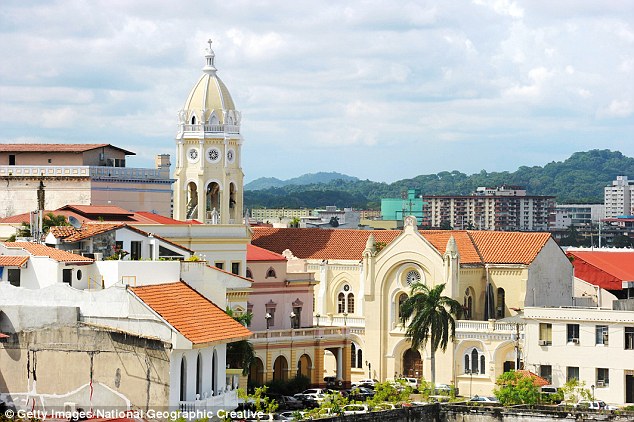Lily Le Brun discusses in International Living how almost 20 years after gaining world heritage status, the historic district of Casco Viejo is flourishing.
The historic district of Panama City, Casco Viejo or “Old Town”, received few tourists a decade ago. Its buildings were decaying and the area was rife with crime. In the 1930s, the city’s wealthier residents began moving away from its tightly packed streets to car-friendly suburbs, and by the end of the century its elegant plazas were crumbling and its once-grand family houses were overrun with squatters and weeds. In one of Casco’s squares, the city’s first “skyscraper” — the six-storey American Trade building, built in 1917 three years after the Panama Canal opened — was plastered with graffiti and occupied by a gang.
In 1997, Unesco named this small peninsula at the mouth of the canal a world heritage site, and work began to restore its compact grid of cobbled streets and colonial buildings largely neglected since the 18th century. In 1999, the US ceded control of the canal, and the new millennium ushered in economic revitalisation: according to the World Bank, Panama’s economy grew on average 7.2 per cent annually from 2001 to 2013, making it one of the fastest growing economies in the world.
Today both tourists and Panamanians are returning to Casco Viejo — sometimes called Casco Antiguo — which has been coaxed back into life by government efforts to promote its restoration. “Over the past 10 years we have witnessed a boom in the renovation of historical buildings,” says Andrea Cooper, senior investment adviser with Panama Equity Real Estate, “which has primarily consisted of the development of small condo suites within restored historical mansions. Often these projects sell out in the pre-construction phase.”
They have been joined by mixed-use developments with retail space on the ground floor and residential above. “The increase in available commercial space [means] the cultural scene has blossomed in Casco Antiguo,” says Cooper. “Restaurants, bars, lounges and galleries are regularly attracting affluent locals when previously their principal markets were tourists.”
Last year, Casco’s diminutive skyscraper reopened as the American Trade Hotel, the latest in Atelier Ace’s global chain of boutique hotels. “The building is a symbol of Panama’s history,” says Ramon Arias, one of the owners, and the great-great grandson of the man who commissioned the building.
Arias is one of many Panamanians who have returned to the neighborhood and helped to restore it. What’s the appeal? “The best of a tropical Latin American city is all condensed in 40 blocks,” he says. Positioned at the gateway between North and South America, and as the guardian of the Panama Canal, the country occupies a key position in world trade. A $5.25bn project to expand the canal by early 2016 will double the capacity of the waterways.

The Panamanian government is also trying to eliminate obstacles to trade and to attract wealthy migrants. According to Knight Frank, the number of ultra-high net worth individuals (those with a net worth of more than $30m) in Panama City rose 80.9 per cent from 2007 to 2014. It is forecast to rise 51.8 per cent over the next 10 years.
While work continues to preserve historic buildings in Casco Viejo, signs of modernization are visible across the bay. In the Punta Pacifica area a number of high-rise developments have been built during the past decade, including the Trump Ocean Club, a 70-storey tower featuring 700 condominiums.
Neighboring areas just outside the Unesco zone, which are not subject to the same restrictions, are also undergoing construction. Developers have been buying up land for investment in these areas for years, says Cooper, citing the 15-storey Casco View in Santa Ana. Its 136 one-bedroom and studio apartments are due for completion in 2018, with prices starting from $90,000.
Yet it is property in the city’s historic district that commands the highest prices. Casco Viejo is small, and restored historical properties are highly sought after. The “extremely low” inventory, says Cooper, “is driving demand for new projects — and price points — upward.” There are specific architecture controls to ensure the area’s historic character is preserved, and the restoration process is time-consuming and expensive. “This is one of the reasons why the price per sq metre in Casco Antiguo is 25 to 40 per cent higher than for luxury oceanfront properties in downtown Panama City,” adds Cooper.
Restored properties are mostly priced in the $3,500 to $4,000 per sq metre range, estimates Cooper, but she is aware of upcoming projects with pre-construction sales at close to $5,000 per sq metre — “a record-setting price per square metre for Panama”.
Casco Viejo, with its bohemian atmosphere, is now one of the most visited sites in the country. Crime in Panama is falling, according to statistics from the US department of state: in 2014 there were 519 murders, down from 800 in 2009. A “tourist unit” is active in Casco to make people feel safe, and a social enterprise, Fortaleza Tours, is even helping former gang members to become tour guides.
Compared with a decade ago, the view from the rooftop of the American Trade building looks rather different today.
Buying guide
? Casco Viejo is about 25 minutes’ away by car from Tocumen international airport
? Maintenance fees tend to be high in Casco Viejo, given that most restored buildings have a small number of units and fewer owners to share operating expenses. This can reduce rental returns
? Panama’s currency, the balboa, is tied to the US dollar, which is accepted in all places. Real estate is priced in US dollars
What you can buy for?.?.?.
$500,000 A two-bedroom apartment in Casco Viejo with views of the Pacific
$1m A restored three-bedroom house in the heart of Casco Viejo
Please let me know if you would like to see some listings we have in Casco.
